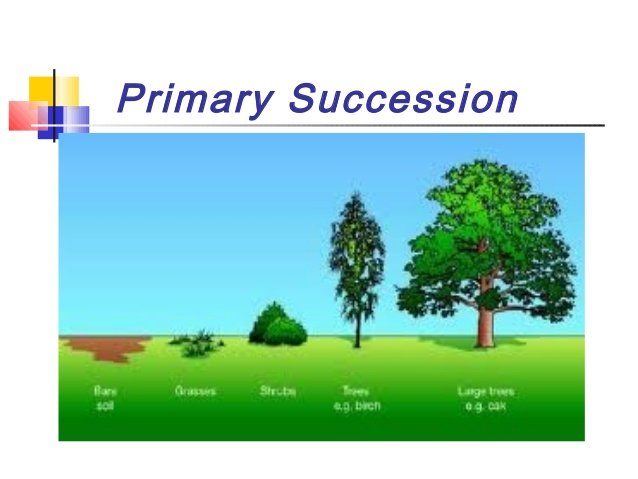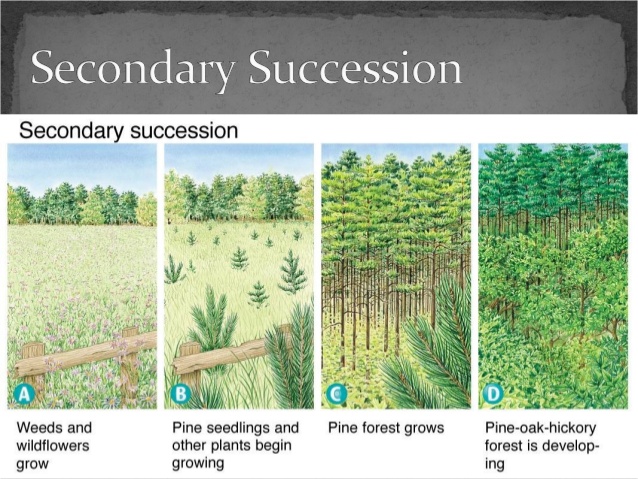Mature forests contain a variety of plants. Prehistoric pines, old oaks and historical hickories dominate the area. Sometimes entire forests can be wiped out by natural disturbances like fire. The day after a fire the forest would look abandoned. However over time the forest would grow back. First low growing grasses would sprout. Then bushes followed by small trees. The predictable changes that occur in a community is called succession.

There are two kinds of succession.
Primary succession is the changes that occur in an area where no soil existed. Ice melting to expose bare rock will go through primary succession. Over time, pioneer species will populate the area. Organisms like mosses and lichens break up the rock and help create soil. Next, seed dispersal will bring seeds to the new soil and small plants will start to grow. Over time the once bare rock will be a mature forest. 
Secondary succession occurs when a developed ecosystem gets disturbed by natural disasters. Fires and tornadoes can wipe out fully developed pieces of land. Human activities like farming and logging can also change landscapes. First low growing plants will populate the area. Then trees appear and develop. Secondary succession creates a mature forest faster than primary succession because soil was already in the area.

Primary succession is growth for the first time. Secondary succession occurs where soil already exists. Both types of succession are a series of predictable changes in the development of an ecosystem.
Authors get paid when people like you upvote their post.
If you enjoyed what you read here, create your account today and start earning FREE STEEM!
If you enjoyed what you read here, create your account today and start earning FREE STEEM!